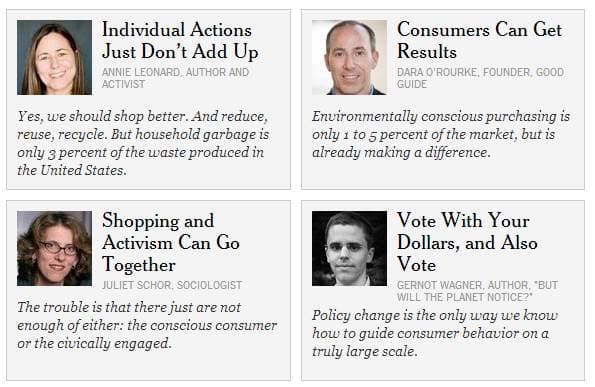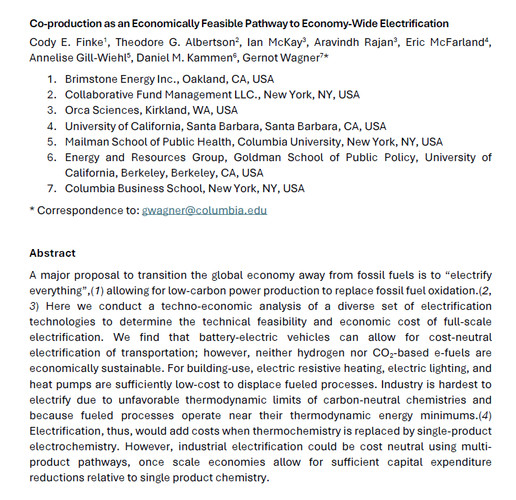Don't just vote with your dollars. Vote.
New York Times Room for Debate

My take on today's New York Times "Room for Debate" debate with Annie Leonard, Dara O'Rourke, Juliet Schor, and Zem Joaquin:
Don't just vote with your dollars. Vote.
If you want to know whether “buying green” is the answer, ask any company that publicizes its sustainability efforts. They certainly aren’t doing it to sell less product. They want to attract more customers. So all that greening may actually lead to more buying, more selling and more carbon pollution.
But forget global warming for a moment. Start with plastic bags. Environmentalists have been searching forever for ways to induce shoppers to use fewer of them. Turns out naming, shaming and moralizing don’t hold a candle to straightforward pricing. Charge 15 eurocents per bag and watch Ireland’s bag consumption plummet by 90 percent. That’s one billion bags a year. In 2010, Washington, began charging 5 cents per disposable bag — paper and plastic — and bag use fell more than 50 percent.
If you want to guide consumer behavior, go through the price mechanism. Build 300 miles of bike paths, as Mayor Michael Bloomberg has done, to make biking cheaper in every sense of the word, and New Yorkers will do more of it. Charge for plastic bags. Tax carbon.
Policy change of this sort is the only way we know how to guide consumer behavior on a truly large scale. The point is clear: Don’t just “vote with your dollars.” Vote.
That raises the question of what induces people to vote green. If “buying green” led to “voting green,” sign me up. But I’m afraid the link seems to run the other way. So-called single-action bias is a well-documented psychological phenomenon. Do one good thing — like magnanimously paying more for a recycled, reusable shopping bag — and move on, sure that you’ve solved global warming for the day.
By all means, buy green as often as you wish. But vote for the right policies to make certain everyone makes environmentally sensible choices.
For a lively discussion, go to New York Times' Room for Debate.


